
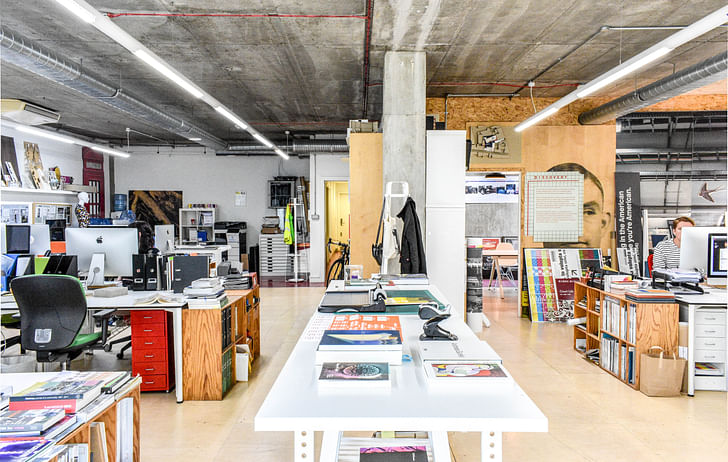
Nissen Richards, comprised of Pippa Nissen and Jim Richards, have managed to successfully nurture a practice built from their inherent love of architecture, strengthened by their additional love of graphics, and theatre and exhibition design. A multi-interdisciplinary practice, with an extremely versatile workforce, the team have worked on projects at the V&A, British Museum and Printworks to name a few.
For this Studio Visit, I went to visit them along the canal near Haggerston in East London and spoke to the two founders, Pippa Nissen and Jim Richards as well as Associate Tetsuro Nagata, to find out more about their current projects and how they utilise their specialist skills set.
Location?
Pippa: Haggerston, along the canal.
When did the practice start?
Pippa: 2010. Before starting the practice I was working as an architect and theatre designer, and I was asked to design Telling Tales at the V&A which was such an amazing experience that it solidified ‘this is what we want to do.’
I studied Architecture, however, halfway through did an MA at The Slade in Theatre Design. What was lovely about starting Nissen Richards Studio was that we were able to bring all our interests together and slowly grow the various strands of design in unison.
How many staff?
Pippa: Now we are 28!
Company ethos?
Pippa: Since starting it has always revolved around a multi-disciplinary approach and focused on the idea of collaboration. In addition, I think learned from my commercial days about what really works, so, giving people ownership of projects; ensuring the same team see it through and are completely embedded in the project.
Additionally design quality is vital to us. Lastly, it also very important to us to encourage a playfulness mixed with an intellectual approach.
Jim: Quality of thought, excellence in execution at all levels, from initial ideas all the way through to developing concrete ideas and delivering on site.

As a multi-disciplinary team, how do you work together and utilise each other's skills?
Jim: The projects are varied and we do each have our own roles and preferred sectors but when there is a more diverse project we all tend to get involved. It is great having the resources and the knowledge from all the other members of the team that just wouldn’t necessarily have in a normal architectural practice.
Pippa: Generally I work on the theatre and exhibition design and Jim works on the architecture. Our ‘golden’ projects are when we do get to combine all of our expertise and do the entire project together. We just did so at the British Museum, with the Sir Joseph Hotung Gallery of China and South Asia , where we delivered the gallery; that included the exhibition display; the graphics, the architecture, it’s really amazing to be able to do so. We are doing the same at the moment at Sutton Hoo, opening in 2019.
It is great having the resources and the knowledge from all the other members of the team that just wouldn’t necessarily have in a normal architectural practice.
Tetsuro: We do all share ideas and discuss projects together. I particularly like having the graphic designers, especially when working on exhibition projects because even if you don’t like everything they do, it will spark an idea or encourage a new perspective you hadn’t considered.
It differs slightly perhaps to other studios as often it is less about the technical knowledge and more about knowledge of the brief, especially with the exhibition work, you have to know a lot about the content. People aren’t as able to dip in and out of the work but are always keen to discuss the project and find out more. It’s a huge bonus to be able to work on such diverse projects, you never get bored.
Do you enter into projects offering a multi-disciplinary service?
Pippa: For us it is always enjoyable working on many facets of the same project, and I think that our enthusiasm comes across. Recently we have taken on an Interpretation specialist who can write text and really help us shape our ideas, which again is fantastic.
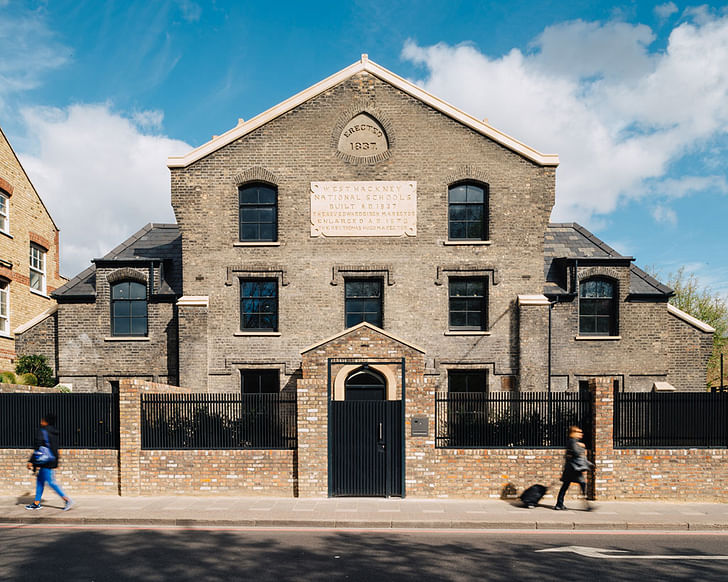
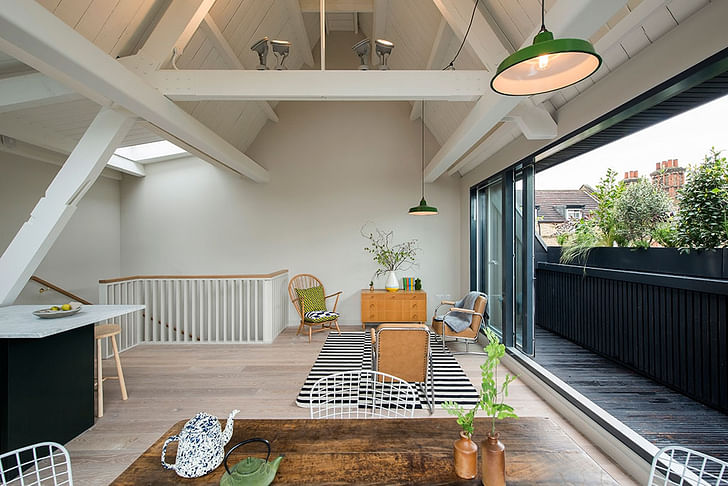
Current projects?
Jim: The architecture team have crossed over into our other sectors at the moment, as we have started working on music and events venues. We completed a new live space at the Printworks earlier in the year and are now working on an events venue at Greenwich Peninsula. It’s great for me personally to work on projects that integrate graphic design as my father was a graphic designer, and I always wanted to study it but he suggested that I switch to architecture instead!
We are also doing a lot of housing at the moment, we like working on projects with a variety of scales, either new build or working with existing buildings. Recently we delivered a residential development in Stoke Newington which was formerly a school. We also have some new build housing - we have finished a few in South London and we have four more on at the moment.
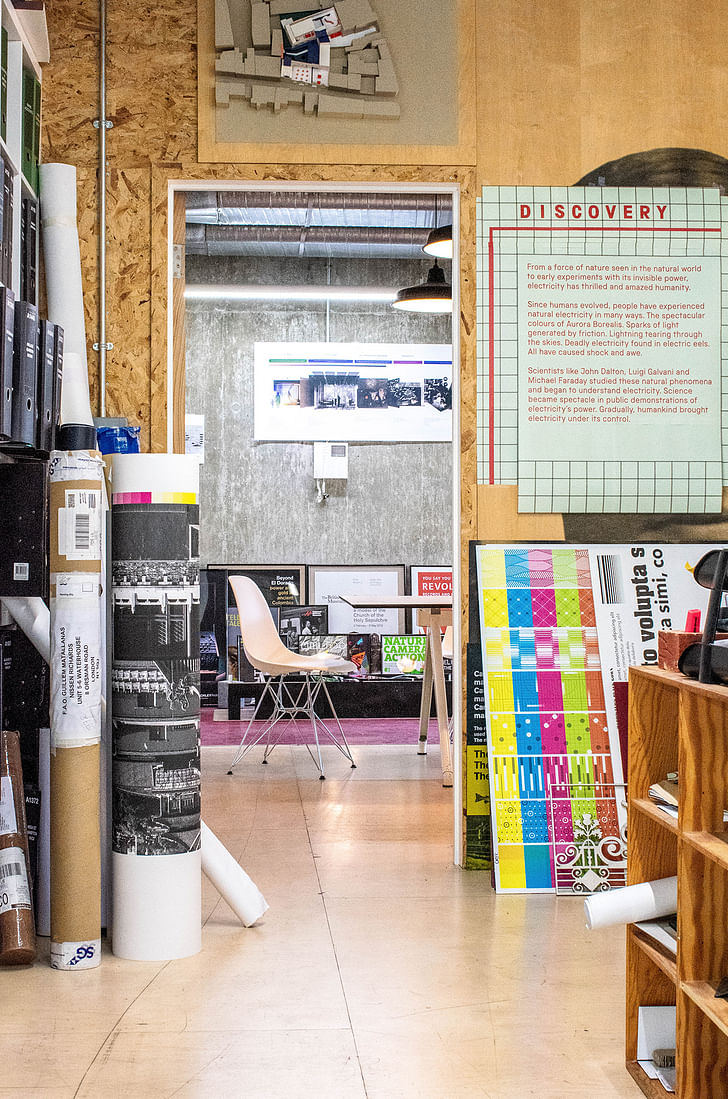
Tetsuro: At the moment I am working on an exhibition called Life in the Dark at the Natural History Museum. We have been collaborating with Jason Bruges Studio who are light and interaction specialist which has been really fun. It is a very intriguing exhibition and we have tried to create different worlds within the exhibition, for example, a cave world and a deep sea world.
I am also working on a two-bed house in Finsbury Park for a young couple. They are building a house in the garden of one of their childhood homes. It’s been going on for a long time and been quite a hard project to move forward. It is a black box, with a pyramid roof all completely clad in timber.
Pippa: Great Exhibition of the North has just opened. For that, we took over a museum for 80 days. It is about showcasing northern objects in Newcastle. The spirit of it is great, we got to take over the whole space, a huge museum and filled it with graphics, lighting, and stages for all these new objects.
We also have a great project in Oslo, working in the Norwegian National Library. What is great for us is really getting to know Norway and learning about their culture. The national library in Norway have all of the documentation from very early on to present day.
Another great project is The Wordsworth Trust transformation project: Reimagining Wordsworth at Dove Cottage where he lived in the Lake District. It’s a really interesting project where, again, we will be working through the landscape, and museum, in addition to the exhibition, graphics and the branding.
Do you plan on introducing any new sectors?
Pippa: We are actually introducing a film team this year, that’s the next sector we want under our umbrella. Film feels like a natural extension of our graphic design work.

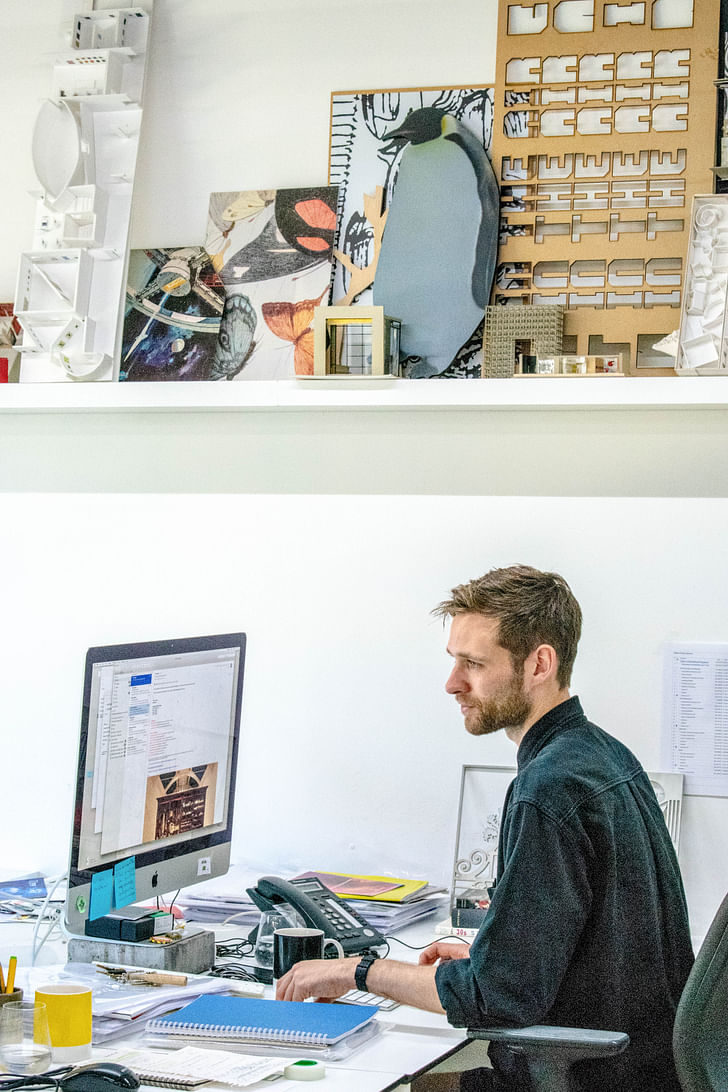
Favorite part of the studio?
Tetsuro: The canal view is really lovely and we have a lot of space. I particularly enjoy the middle working space which acts as a sounding space. Often it can be quite messy, a place to test ideas or we use it for one to one discussions.
We would like more model spaces but you still have to look very professional. It is nice having our models and posters around to remember our past work. Trying to be creative and hands-on while still being professional.
We are actually introducing a film team this year, that’s the next sector we want under our umbrella.
Pippa: I love this room (the meeting room) because this is where we come and have our workshops. For example this morning we going to have a workshop on Oslo, about whether to work chronologically or mix it up. Quite often we put lots of ideas up on the wall and then invite clients around which is really productive. Or we create models of the exhibitions which allows clients to understand the experiential elements. So I suppose this is where the magic happens! It’s been so long building up the company before we have had the privilege of a meeting room so I personally really cherish having this space.
Jim: The people. They are all really lovely. It is always important at the interview stage that people have the quality of work but for us, they must have the personality to go with it. It good to have a mix of personalities.
Favourite nearby coffee shop/pub?
Tetsuro: We go to The Glory a lot. You always get a seat if you go at 6.30 - it gets busy at 9 for the shows in the evening so you can stay and have a few drinks and a chat and if you fancy staying on you can watch the shows!
Pippa: In the summer it is lovely to sit along the canal. I especially like the Towpath cafe, they do seasonal food which is fantastic!
Do you eat lunch together?
Pippa: A lot of people do - they will sit at the round table near the window.
Pets allowed?
Pippa: No one’s asked yet!
Most played song/artist/musician in the studio?
Pippa: We don’t tend to have music on. The size that we at now enables little pockets of conversations and so I suppose we rely on conversation instead.
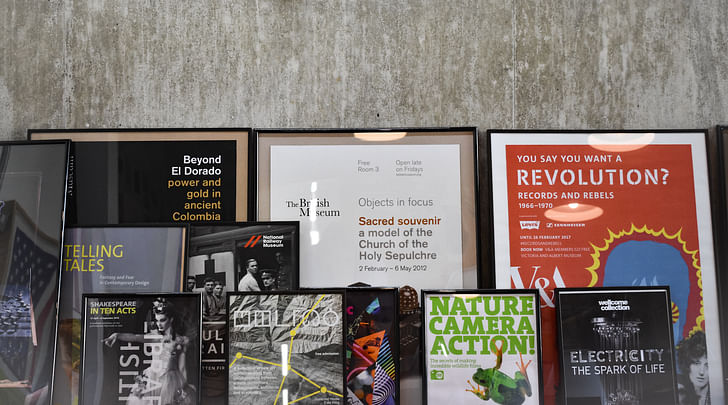
Architect/Architectural style you look up to?
Tetsuro: For the museum work we often look outside of architecture, we are trying to create exhibitions that go beyond what you would expect of an exhibition. Trying to create a world that is convincing enough to make you believe you are in a different world.
We look up to practices who are more established in our field particularly if they started out in a very similar way to us.
Favourite building in London?
(Without hesitation...) Tetsuro: Barbican.
Pippa: There are a lot of buildings that I have loved in London for a long time as I grew up here and now quite often I get to work in those building which is such a privilege. The V&A for example, The British Museum, Somerset House, The Wallace Collection, Dulwich Picture Gallery.
Jim: One of my favourites, which I've always liked but I never realised how much until I was reading about the recent tragedies and I started crying is the Glasgow School of Art. One of my polytechnic tutors was educated there and he took us to visit it in our second year and I remember sketching it and loving it.
There are a lot of buildings that I have loved in London for a long time as I grew up here and now quite often I get to work in those building which is such a privilege.
In London, it changes a lot, I do like the Tate Modern, I think that was one of the first projects that had a really creative, inventive interpretation of an old building that answered to scale. I worked for the contractor when I was a student, actually on site immediately to the east. We were next door and our site offices stacked down the side of Tate Modern worked for the contractor when I was a student, actually on site. We were next door and our site offices stacked down the side of the empty Bankside power station before it was Tate Modern and I remember looking at it and thinking, ‘wow... that would be a fantastic space.’

Favourite project you have worked on in the office?
Tetsuro: The Sir Joseph Hotung Gallery of China and South Asia at the British Museum which took two years to complete. Basically, because it represents where we want to be; all the nitty-gritty of an exhibition and gallery, all the details of design (we had 3000 objects to place, every single one, we had to decide how we were going to place it, mount it, each one). We also had to completely redo the gallery space, we ripped it all out. It was the perfect example of us combining all our expertise, utilising all our knowledge. Jim is great with the infrastructure work and technical knowledge, as well as sustainability.
One of the key problems of the space was that it was not heated properly so it got really hot in the summer and really cold in the winter. Our challenge then was to make the gallery work as efficiently as possible but without ruining the aesthetic of the design and display. It is also a Grade I listed buildings so we designed a way to make the functional elements in accordance with the style. For example, the radiator covers were integral to the sustainability design but we also worked hard to make them architecturally beautiful and blend into the background. Unfortunately, no one would ever notice them but they are really successfully designed. For me, it encompassed so much as those things are so crucial to how you feel in the gallery and they seamlessly disappear into the design.
Jim: Grange Hall- inserting new homes into an historic yet dilapidated building - adding new bits, but retaining the old was great fun. It was a huge challenge and we didn’t make a profit on it but it became a labour of love so it was very nice to have it recognised when we won a WhatHouse? Gold Award for Best Renovation.
I am also very fond of a housing project we are working on in Clapton that has gone into planning (for the second time), I think that has the possibility of being a little gem if we get permission!
It was a huge challenge and we didn’t make a profit on it but it became a labour of love so it was very nice to have it recognised.
Pippa: I loved Telling Tales, the first exhibition that I worked on. But, I think one of my recent favourites is You Say You Want A Revolution? Records and Rebels 1966–1970. You wore headphones and as you walked around the music changed. It was at the V&A which I love, it was about the 60’s which I love, it was just a really enjoyable project, it had such a fantastic spirit to it.
Now, however, we have so many interesting projects coming in, it just keeps getting better and better!
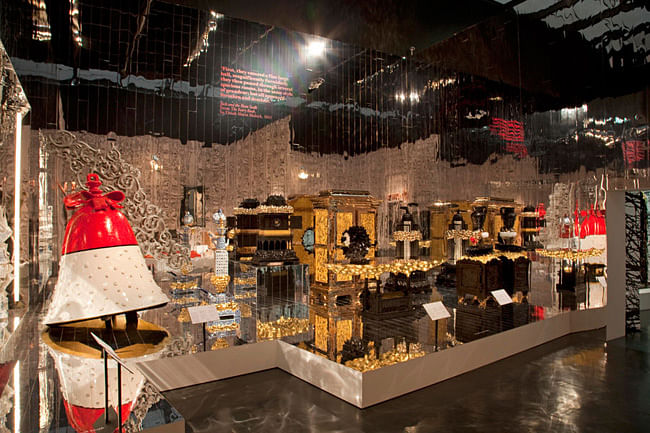
Ellen Hancock studied Fine Art and History of Art at The University of Leeds and Sculpture at Mimar Sinan Fine Arts University in Istanbul.Now based in London she has a keen interest in travel, literature, interactive art and social architecture.
No Comments
Block this user
Are you sure you want to block this user and hide all related comments throughout the site?
Archinect
This is your first comment on Archinect. Your comment will be visible once approved.